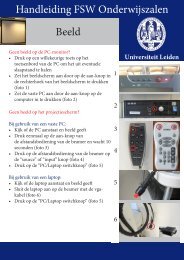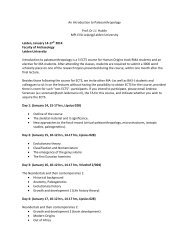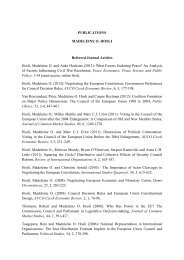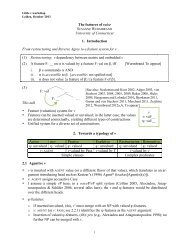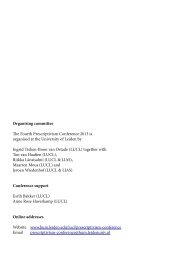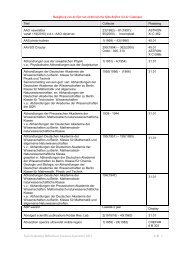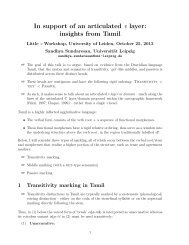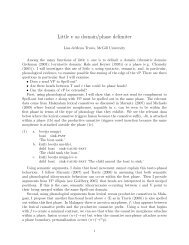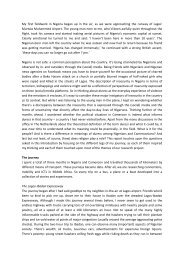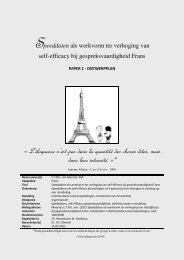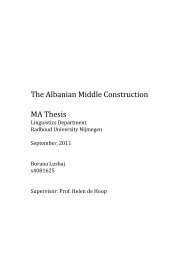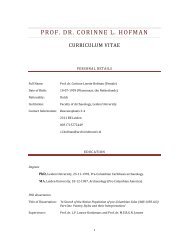Institute for History Annual Report 2010 - O - Universiteit Leiden
Institute for History Annual Report 2010 - O - Universiteit Leiden
Institute for History Annual Report 2010 - O - Universiteit Leiden
Create successful ePaper yourself
Turn your PDF publications into a flip-book with our unique Google optimized e-Paper software.
explained by the different ways in which the<br />
vulnerability of (potential) migrant women and<br />
men are constructed. Migrants themselves, their<br />
families, immigrant communities, employers,<br />
lawyers, governments, organizations and media<br />
reports all play a role in the construction of this<br />
vulnerability. The heuristic constructed<br />
vulnerability model builds on recent research on<br />
gendered assumptions about vulnerability in<br />
migration discourses. The model also builds on<br />
research into the social construction of risks,<br />
acceptability of risk, and risk avoidance. Although<br />
the model is thus firmly rooted in current research,<br />
constructed vulnerability has not yet been used to<br />
explain systematically gendered differences within<br />
migration and settlement.<br />
Since it is our aim to explain differences between<br />
migrant men and women, it is important to note<br />
that several authors have stressed that there is no<br />
consensus as yet about what these differences are.<br />
Various attempts have been made to take inventory<br />
of differences between migrant men and<br />
women, but researchers agree that the results have<br />
been somewhat disappointing. The constructed<br />
vulnerability model is based on what is now<br />
known about differences between men and<br />
women in migration. The differences that are<br />
created do not (necessarily) result in a restriction<br />
of the migration of women, but do cause women<br />
to migrate via different routes, with different<br />
agency. They are submitted to more social<br />
monitoring and they seek to avoid (perceived)<br />
risks. Immigrant women are (perceived to be)<br />
more at risk and are (perceived to have) less<br />
<strong>Institute</strong> <strong>for</strong> <strong>History</strong><br />
132<br />
capacity to cope with hazards. The result is that<br />
they are (perceived as) more vulnerable. Rights<br />
and opportunities are different, as are the safety<br />
nets to fall back on. As a result they set up and<br />
make use of different networks than men.<br />
The four projects that are part of this research are<br />
described in more detail below.<br />
In Between (Post-doctoral project)<br />
Corrie van Eijl<br />
Since the 1950’s the Netherlands changed from a<br />
country with low numbers of immigrants into a<br />
multicultural and multicoloured society. Yet there<br />
is an increasing group of immigrants whose stay<br />
has a provisional character, either by choice or out<br />
of necessity. On the one hand there are ‘irregular<br />
migrants’ who lack the necessary permits or<br />
papers; on the other hand migrants who reside in<br />
the country <strong>for</strong> a long period of time but who<br />
maintain strong ties with their mother country and<br />
intend to return or do return. In the context of this<br />
project special attention will be drawn to state<br />
policy, international developments and gender.<br />
State policy contributed to the construction of this<br />
‘home in between’ <strong>for</strong> immigrants and was a main<br />
actor <strong>for</strong> changes. The construction of this<br />
provisional situation is not restricted to the<br />
Netherlands, and no more are the strict<br />
immigration regulations and the actions against<br />
illegal immigrants. Regulations and<br />
implementations distinguish (directly and<br />
indirectly) between men and women. Besides,<br />
motives and possibilities to migrate to the<br />
Netherlands, to stay there or to return are different



